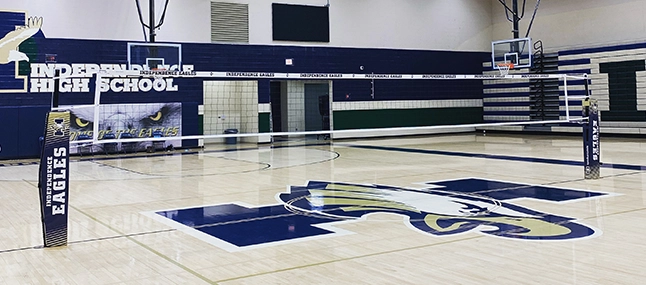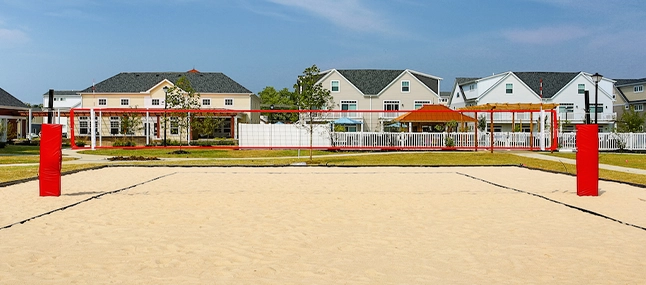Precise court measurements are the foundation of volleyball, ensuring equitable competition, strategic gameplay, and player protection. Adhering to these dimensions is essential for everyone involved in the sport.
Regulation indoor volleyball court dimensions remain the same whether you are playing International, collegiate, or club volleyball. The regulation court dimensions for high school are slightly different. Net heights are different for men’s and women’s volleyball, sitting tennis, juniors, and recreation volleyball. Sports Imports has made it easy to determine what volleyball court dimensions and volleyball net heights are required to meet the regulations set by the FIVB, NCAA, NFHS, and USA Volleyball.
Boundary lines mark the perimeter of the court. The end lines mark the length of the court, and the sidelines mark the width of the court.
The Attack line is the line that separates the front court (the area near the net) and the backcourt (the area between the attack line and end line).
The Service area is the area beyond the service line where players serve the ball.
Regulation beach volleyball court dimensions vary depending on whether volleyball is being played in competition or for recreational purposes. The required beach volleyball court dimensions for USA Volleyball, NCAA, FIVB, and World doubles competition are 16m by 8m (52’6” by 26’3”). USA Volleyball and the NCAA recommend having a free space of 6m (20’) and state that adjacent courts may share free space. If adjacent courts are situated end line to end line, 9m (29’-6”) of free space is recommended.
For FIVB World and Official competitions, the free zone is a minimum of 5m (16’) and a maximum of 6m (20’) from the end lines/sidelines. The free playing space shall measure a minimum of 12.5m (41’) in height from the playing surface. For FIVB World and Official competitions, the free zone is a minimum of 5m (16’) and a maximum of 6m (20’) from the end lines/sidelines. The free playing space shall measure a minimum of 12.5m (41’) in height from the playing surface. Boundary lines mark the perimeter of the court. The end lines mark the length of the court, and the sidelines mark the width of the court.
The Service area is the area beyond the service line where players serve the ball.
Whether you're planning to build a new pickleball facility or simply want to understand regulation court specifications, accurate dimensions are crucial for proper gameplay. Here is our breakdown of the essential measurements and layout requirements for a regulation pickleball court, from the overall court size to specific zones and line markings.
A regulation pickleball court measures 44 feet in length and 20 feet in width, providing a total playing area of 880 square feet. For metric measurements, this translates to approximately 13.41 meters long by 6.1 meters wide, covering 81.7 square meters.
The pickleball net spans 22 feet (6.7 meters) across the court. The net height is set at 36 inches (0.914 meters) at the sidelines and dips slightly to 34 inches (0.864 meters) at the center.
The court is divided into distinct sections by several key lines. A centerline runs parallel to the net, splitting the court into two equal halves. The non-volley zone, commonly known as "the kitchen," extends 7 feet (2.13 meters) from each side of the net. Service zones are positioned 15 feet (4.57 meters) from the net on both sides.
The court's boundaries are clearly marked by sidelines and baselines, with the centerline bisecting the court lengthwise. The non-volley zone lines create a distinct rectangular area near the net where volleying is prohibited.
These dimensions ensure fair play and an enjoyable game for players of all skill levels. If you're planning to build or use a regulation court, following these guidelines will help you get it just right.



© 2025 Sports Imports. All Rights Reserved. Privacy Policy
Website Designed by SocialFirm